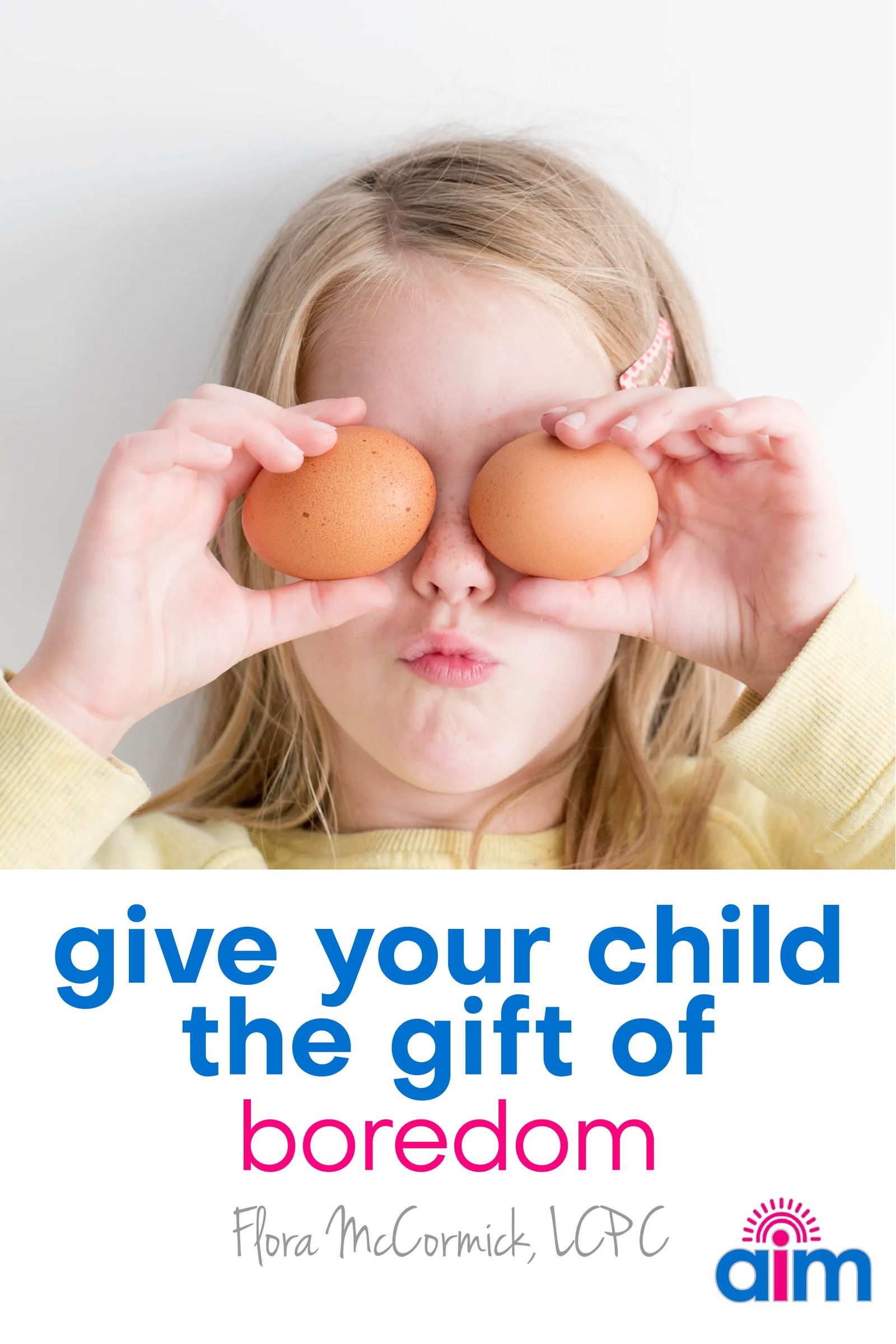Give Your Child the Gift of Boredom

As we near Spring Break and Summer vacation, it can be easy for parents to wonder, “How will I fill all these hours with something fun for my child to do?” If you look at your wide-open calendar with a bit of panic, take a moment to step back, breathe, and consider planning nothing. That’s right: nothing. I don’t mean you can’t plan a vacation or fun experience. And I certainly am not speaking against the importance of having an enriching environment in your home, to support learning and development. ie. Activities for winter and Activities for Summer. However, it is also valuable to make intentional time in the schedule to do nothing. This will give your children the needed space for unwinding, relaxing, and maybe even experiencing “the gift of boredom.”
Kim John Payne, author of Simplicity Parenting, works with thousands of parents every year toward simplifying their children’s lives with regard to “environment, rhythm, schedules, and filtering out the adult world” (p. 19). He believes “Boredom is often the precursor to creativity… Instead of always being scheduled or entertained, children get creative. They begin building a world of their own making” (p. 141). He believes so strongly in the power of boredom that he has a habit of prescribing it 3 times a day to parents of young children as a necessary and valuable part of any child’s day.
If your child approaches the time with loathing or resistance, Payne suggests you can simply say, “Something to do is right around the corner.” Imagine what your child might do or create or imagine, given the opportunity to have a wide open mental canvas with nothing dictating what they should do. I’ve seen this beauty firsthand with my 2-year-old and 4-year-old. Given the pressure of wanting dinner ready in thirty minutes, I said to my 4-year-old, “I am making
dinner right now. Find something to do without mama”. There was absolute resistance at first. After what felt like 20 minutes (but probably was 3 minutes) of plea vs. broken record response (where I repeated my simple phrase), I realized I wasn’t repeating myself anymore. My son and daughter had given up the battle, and wandered over to the cardboard box by the garage door that was waiting to be put out in the recycling. They began crawling in and out, choosing who’s turn it was to be the driver, and coming over to me only occasionally, to ask for a material for their creative play. “Do we have buttons for the front of our car, Mommy?” (To which I would hand them a colored pencil or crayon for drawing). The creativity was abounding, and it was beautiful to watch.
In summary, the emphasis here is to avoid over-scheduling by allowing for some blocks of unscheduled time. This gives space for the magic of imagination, creativity, and peaceful joy to unfold - whether it's fort-building (inside or out), family hikes, cooking, art and read-ins. Another key to this, in Montessori, is observation. You can read more in our article on Following the Child. We can watch for what tickles the fancy and make sure there is something to do, while also observing what feels stressful for each child, making sure we make space for both in our family life. After you have an experience of experimenting with “boredom” in your family, please drop us a line to share what emerged. We’d love to hear from you!

Flora McCormick has been a Licensed Clinical Professional Counselor & Parenting Coach for 10 years, she helps parents of young children to calm the chaos, and revive connection and cooperation. Her strategies are sustainable for busy parents, using kindness & firmness at the SAME time. The result is an improved relationship with your child, where you can enjoy being a parent.






















